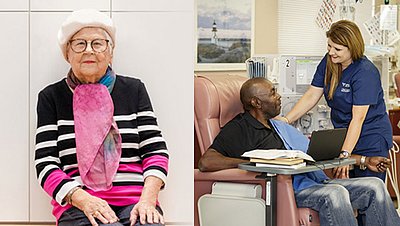Our patient stories and company features.
Virtual reality as the next step in patient empowerment
In home dialysis, patients perform most of their own treatment at home, only going regularly to their dialysis center to check that things are as they should be. This means good training is especially important for home dialysis patients. As Continuous Ambulatory Peritoneal Dialysis (CAPD) uses the peritoneum as the dialysis membrane, patients can perform this form of treatment largely by themselves at home or at their workplace, allowing them to maintain a high quality of life in spite of chronic kidney failure. At the dialysis center or clinic, the patient and trainer spend several days practicing how to use the dialysis equipment, and the patient learns about hygiene measures and the steps to be taken before and after treatment.
This in-person CAPD training has now been supplemented by virtual training. It can simulate any environment, such as a living room. The patient uses a controller to interact with the virtual environment and perform tasks like preparing the simulated treatment room – including cleaning the table with a disinfectant wipe, picking up and putting down objects like the dialysis bag and disinfection cap, and adjusting the dialysis machine.
Images are combined with language and interactive elements to make VR training especially appealing and realistic. It guides patients through every step of peritoneal dialysis treatment using the stay•safe system, including changing the bag and using the stay•safe DISC.
Patients can carry out the individual training modules at their own pace and repeat them as often as needed until they have mastered them to supplement the lessons learned with the trainer. The training is available in several languages so that more patients can learn in their native language. The aim of stay•safe MyTraining VR is to expand the range of training opportunities for home treatment and help patients enjoy a successful start to home dialysis. Currently, the stay•safe MyTraining VR is only available in Germany, but a rollout to other countries is planned for 2022.













